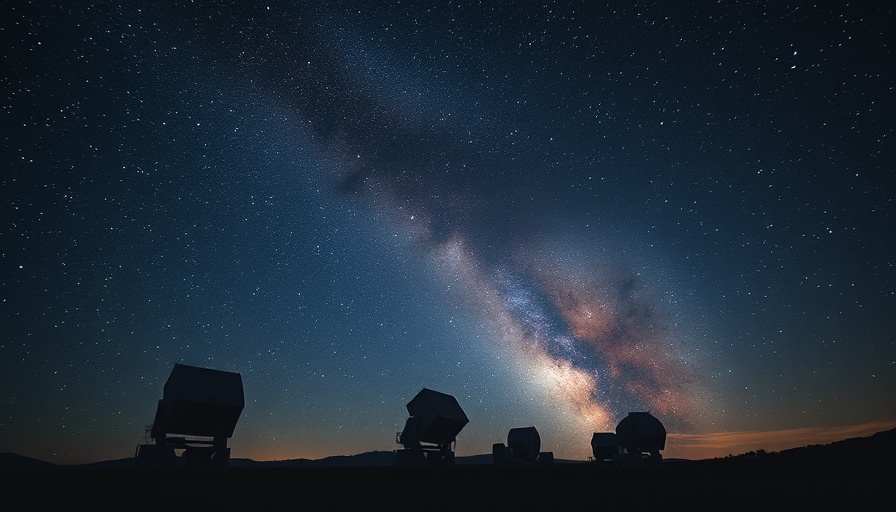
The Mysterious Force Hurling Stars: Is a Supermassive Black Hole in the Large Magellanic Cloud?
Recent discoveries have stirred the scientific community, suggesting that a supermassive black hole (SMBH) may reside in the Large Magellanic Cloud (LMC). This SMBH could potentially be the source of hypervelocity stars—stars that travel at astonishing speeds, often exceeding a thousand kilometers per second—as they are ejected into the Milky Way galaxy. The revelation challenges previously held beliefs for astronomers regarding the origins of these fast-moving stars.
Understanding Hypervelocity Stars: A New Perspective
Hypervelocity stars (HVSs) were first theorized nearly four decades ago, with the first confirmed sightings emerging in 2005. Unlike conventional stars in the Milky Way, which have average speeds of about 100 km/s, HVSs can travel as fast as 1000 km/s, placing them firmly in the realm of the galaxy's mysteries. Scientists universally accepted that HVSs stem from the Milky Way's central supermassive black hole, Sagittarius A*. The prevailing hypothesis, known as the Hills mechanism, suggested that HVSs originated from binary star systems orbiting close to Sagittarius A*, which would eject one star upon the black hole's interaction.
New Research: Evidence from the LMC
A groundbreaking study published in The Astrophysical Journal suggests that many of the Milky Way's HVSs are, in fact, linked to the LMC. The research led by graduate student Jiwon Han utilized data from the European Space Agency's Gaia spacecraft to reevaluate previous star surveys conducted in 2006. Findings indicate that some HVSs can trace their lineage to the gravitational influence of a potential SMBH in the LMC, highlighting a new direction in our understanding of stellar movements.
What This Means for Galactic Archaeology
The implications of discovering a SMBH in the LMC stretch beyond just stellar dynamics. This finding provides valuable insights into the gravitational interactions between galaxies and could reshape our understanding of galactic formation and evolution. As Han and his team continue to analyze data, they are not just uncovering the paths of HVSs but also rewriting chapters on how galaxy interactions work in the universe.
Future Directions: The Quest for More Data
As research progresses, the scientific community's focus will likely shift towards crucial investigations into the properties of the LMC. Future observations may offer definitive proof of a supermassive black hole's existence and its role in shaping the Milky Way's stellar landscape. Enhanced observational technologies and collaborative international astronomy efforts will be paramount in peeling back the layers of this cosmic mystery.
Conclusion: A New Era in Astronomy
The suggestion that a supermassive black hole may exist in the LMC serves as a reminder of how much we have yet to learn about the universe. Each discovery deepens our understanding of cosmic phenomena and encourages future generations of astronomers to continue exploring the vast expanse of space.
 Add Row
Add Row  Add
Add 




Write A Comment